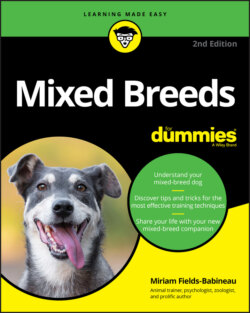Читать книгу Mixed Breeds For Dummies - Miriam Fields-Babineau - Страница 53
Round ’em up: The Herding Group
ОглавлениеThere are 18 dogs in the Herding Group. And these dogs not only round ’em up, but also push ’em along. They were bred to help shepherds and farmers, working long hard days in all types of weather. Because they were bred to work independently as well as in close sync with their handlers, many Herding breeds are extremely intelligent.
The most common breeds within the Herding Group, and those most likely to be found within a mixed-breed dog, are the Australian Cattle Dog, Australian Shepherd (see Figure 3-7), Border Collie, Cardigan Welsh Corgi, Collie, German Shepherd Dog, Old English Sheepdog, Pembroke Welsh Corgi, and Shetland Sheepdog.
Illustration by Barbara Frake
FIGURE 3-7: The Australian Shepherd is a classic Herding dog, and is commonly found in mixed breeds.
The breeds within the Herding Group range from those with short legs (like the Corgis) to those with long, lithe legs (like the Collie). Though none of these breeds has a short coat, several have thick medium coats, and most tend toward long fur, making them appear more like the animals they were bred to control.
Herding dogs have high energy. They can run an entire day and make you tired just watching. Herding dogs are on their best behavior if they’re allowed to exercise a lot. They’re even better if they receive consistent training on a daily basis — in fact, they thrive on it. Because these dogs were bred to work hard and long hours, they need the outlet that training activities provide.
Herding breeds tend to learn complicated tasks faster than any other breed, making them ideal for agility, obedience, herding, and many other occupations. They aren’t great breeds to have around small children, because they will chase moving objects and purposefully bump into them as a means of gathering the flock together. However, they’re wonderful pets for people with active lifestyles.
